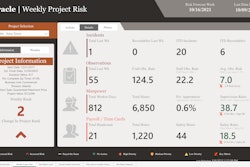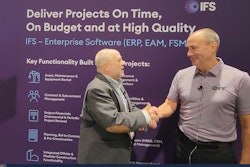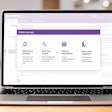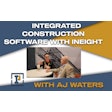
Enterprise resource planning (ERP) software for construction differs in significant ways from ERP used in other industries.
Like most three letter acronyms in enterprise technology, ERP is a term coined by Gartner in 1990, modifying the manufacturing requirements planning (MRP), which in turn was originated more or less by IBM engineer Joe Orlicky as a computerized approach to satisfying the inventory needs of the Toyota Production System. ERP in essence added functions beyond inventory control to an enterprise solution, including financial accounting, project management, business intelligence, sales and often customer relationship management (CRM).
While MRP and ERP originated for manufacturing, it evolved for the requirements of project-centric manufacturers like those delivering engineer-to-order (ETO) and for configure-to-order (CTO) approaches. While tier one ERP software from SAP, Microsoft or Oracle have a footprint in the largest construction and engineering companies, that footprint may end at financials, with either independent software vendor (ISV) solutions extending the solution into construction disciplines like estimating and project delivery. Other ERP products from vendors more tightly aligned with construction, like Sage, IFS, Foundation and Trimble Viewpoint Vista and Spectrum, may go deeper into the project operations. But these solutions may also, in their account base, rely on integrations with ubiquitous solutions like Procore, or point solutions for specific disciplines like field productivity or construction equipment fleet management.
IRONPROS caught up with ERP vendor IFS at Procore Groundbreak, where we learned about the importance of software that can handle the many project delivery methods used today, including modern methods of construction like off-site and modular.
EXAMPLES OF BROAD ERP VENDORS WITH A FOOTPRINT IN CONSTRUCTION
When contractors adopt these construction ERP products, they will often harness integrations to common construction-specific solutions for field operations or ISV solutions designed specifically to designed to extend the ERP product for the needs of construction.
EXAMPLES OF CONSTRUCTION-SPECIFIC ERP
These ERP products were designed specifically for construction contractors. In some cases, older and more mature solutions will be extended by cloud-based software for convenient remote access, quality mobile interfaces and more collaborative or digitally-enabled processes.
- Sage 100 Contractor
- Sage 300 Construction and Real Estate
- Sage Intacct Construction
- Penta
- CMIC
- Foundation
- Computerease by Deltek
- Trimble Viewpoint Vista
- Trimble Viewpoint Spectrum
- Atoom ERP from Blackware Technologies
EXAMPLES OF ISV SOLUTIONS
- Inoapps Construction Cloud for Oracle ERP Cloud
- SIS Heavy Civil Construction and SIS Construct 365 for Microsoft Dynamics
- FullClarity solutions for Netsuite
- ScaleApp Construction from ScaleNorth for Netsuite
- 365 Homebuilder from Western Computer for Microsoft Dynamics
SaaS Versus On-Premise or Hosted
ERP software originated as an on-premise solution, run on hardware owned by the customer and often at their physical office location. For a variety of reasons, the software has evolved to reside primarily on the cloud and delivered by subscription. Subscription pricing moves software off of CAPEX and onto OPEX, but contractors in selection mode should take care to still involve senior levels of the organization in an enterprise-level decision process.
Failing this, change management and full adoption may be challenges. As we discussed recently on Construction Tech Talk, a lot of the reason subscription pricing has become the default has to do not with the contractor’s financial position and more to do with software vendor profitability and cash flow.Construction software in the cloud may be nothing more than a mature on-premise solution that has been moved into a managed services environment accessible to the internet. For core ERP functions, this might be pretty performant if there are good, real-time and reliable integrations with more modern solutions used for project management, field productivity, fleet management, human resources and other functions. Construction ERP released to market more recently will be built as single-tenant or multi-tenant software-as-a-service (SaaS). These products are designed natively to use the flexible compute power of cloud servers. Multi-tenant software is the most efficient for the vendor as a central instance of the software is accessed by all customers, who each have a segregated and secure data environment. Single-tenant SaaS requires they spin up a separate environment for each customer, but the architecture generally allows them to update and patch all instances centrally with mininmal disThe greater risk in cloud ERP comes from two fronts:
SaaS software will be receiving more research and development than mature on-premise and hosted solutions, and that should be one consideration. Another thing to consider is that in some cases, more mature solutions will be re-imagined on new architectures or the vendor will build or buy a SaaS product contractors will need to migrate over to. A vendor should ideally be transparent about their roadmap, as Sage has been as they work to get Sage Intacct up to functional parity with Sage 100 Contractor and Sage 300 CRE.
Construction ERP versus Project Management Software
In the meantime, construction-specific project management and business software is coming to encompass the entire quote-to-cash process including procurement and accounts payable, invoicing CRM and other disciplines.
So where does construction ERP pick up and project management software leave off? That really depends, but on IRONPROS, we place many project management solutions also in the ERP category, even though they may lack a general ledger.
As perhaps the first multi-tenant SaaS construction solution to achieve a network effect due to broad use, Procore cuts perhaps the broadest functional swath. Other products that may also qualify as construction ERP include Autodesk Construction Cloud and solutions from InEight, Stack Construction Technologies, HCSS and others.
Key Construction ERP Financials Requirements
Most major ERP products will feature these capabilities, as will but contractors evaluating solutions will want to get construction references similar to their business to make sure it is easily extended with live construction data. Some capabilities will be specific to a given project, while others, including financial measures that affect the contractor’s overall position, will need some type of aggregation or project portfolio management capability. Construction-specific ERP commonly used by contractors will encompass these approaches, and advanced project management software will also deliver many apart from those that require roll-up of multiple projects and even indirect costs:
Earned Value Management (EVM)—milestone-based project management important for complex projects and those for government customers
Estimate to Complete (ETC) and Estimate At Complete (EAC)—tools to project the financial position at the end of a project and the amount of cost yet to be realized given what scope elements are completed
Accrual Accounting—While an application for payment for work may have to wait until a specific milestone is completed, a contractor will still want to track what revenue is earned and can be billed at a subsequent date
Inventory Accounting—Other procurement and supply chain software is often needed, but ERP should handle tracking of cash tied up in inventory, pegging to specific projects, customer-owned inventory and other construction-specific wrinkles
Risk Management—Risk management may be its own module or contractors can rely on reports drawn from various parts the solution or external solutions to identify, prioritize and mitigate risk
Completed Contract—Tools to enable billing for work only when the full scope of a contract is complete
AIA Progress Billing—Using the American Institute of Architects (AI) format, this approach supports the standard G702 Application for Payment and G703 Continuation sheet for a schedule of values
ASC 606—From the Financial Accounting Standard’s Board (FASB) and International Accounting Standards Board, ASC 606 provides a six-step model to recognize revenue from projects, encompassing contract requirements, transaction price, allocation of price across discrete performance obligations or milestones and revenue recognition when performance obligations are met
Excess Cost Tracking and Costs in Excess of Billing—Sometimes, a contractor will bill for work that has not yet been delivered, or realizes costs before that cost can be liquidated on an invoice
Chart of Accounts—This is the core financial analysis tool used to track revenue, expenses and margin in accounting software—this and the general ledger are often the only ERP component missing from advanced construction project management software
Current Assets and Liabilities—Inventory, equipment, cash, accounts payable and other funds that can be turned into cash are current assets, while current liabilities are expenses the contractor will expect ot incur—including those stemming from multiple project scopes underway
Fixed Asset Accounting—Durable assets like construction equipment that depreciate over time
Cost Breakdown Structure (CBS) and Job Breakdown Structure (WBS)—The WBS breaks down a scope of work into discrete parts, and CBS captures the cost associated with these work parts
Lien Waivers—Payments need to trigger appropriately lien waivers so the contractor can give up a claim against the project in lieu of payment—with multiple subcontractors, this requires a high level of effort
Time and Materials Billing—Enables a contractor to build price around a schedule of values factored against labor rates and materials costs with an agreed-upon mark-up
Work-In-Progress Reporting—This is the process for reporting against cost and revenue from active jobs using the various revenue and cost recognition methods
Pay-When-Paid—This functionality will trigger payment for subcontractors when the general is paid by the owner
Construction ERP for Operations
Some mature ERP software products developed for construction over decades may have strong project accounting capabilities that newer products will not be able to duplicate in the intermediate future. A few of these, like Sage 100 Contractor or Sage 300 CRE, may also include project management or field management capabilities. In some cases, users may still rely on this technology or use cloud-based software that exposes the functionality more gracefully from various places and devices. Sage has worked with their ISV Operix for instance first to extend the field productivity functions of their ERP products and then to extend that with functionality that the Sage did not natively deliver.
READ MORE IN OUR SAGE FIELD OPERATIONS PRODUCT DEEP DIVE
ERP used in construction will also have a standard integration with Procore, which then opens a digital workflow to the many other construction operations software products that also integrate with Procore.
BOTTOM LINE: Good core construction ERP functionality is important for any contractor, even those small enough to rely on Quickbooks for their general ledger. As contracts and projects become more complex, contractors will want to ensure they have the enterprise capabilities to profitably execute against contracts, meet obligations and manage cash and risk intelligently.















